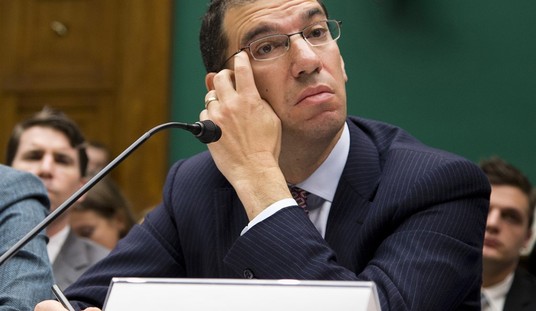We’re getting a lot of e-mail this weekend about an executive order issued on Friday afternoon by President Obama titled “National Defense Resources Preparedness.” While the timing of the EO is curious — why send it out on a Friday afternoon when an administration is usually trying to sneak bad news past the media? — the general impact of it is negligible. This EO simply updates another EO (12919) that had been in place since June 1994, and amended several times since.
Let’s start with Friday’s EO:
Section 101. Purpose. This order delegates authorities and addresses national defense resource policies and programs under the Defense Production Act of 1950, as amended (the “Act”).
Sec. 102. Policy. The United States must have an industrial and technological base capable of meeting national defense requirements and capable of contributing to the technological superiority of its national defense equipment in peacetime and in times of national emergency. The domestic industrial and technological base is the foundation for national defense preparedness. The authorities provided in the Act shall be used to strengthen this base and to ensure it is capable of responding to the national defense needs of the United States.
Sounds dramatic, doesn’t it? This actually matches the language in EO 12919, however, even the part about “in peacetime.” What follows is significantly less dramatic:
Sec. 103. General Functions. Executive departments and agencies (agencies) responsible for plans and programs relating to national defense (as defined in section 801(j) of this order), or for resources and services needed to support such plans and programs, shall:
(a) identify requirements for the full spectrum of emergencies, including essential military and civilian demand;
(b) assess on an ongoing basis the capability of the domestic industrial and technological base to satisfy requirements in peacetime and times of national emergency, specifically evaluating the availability of the most critical resource and production sources, including subcontractors and suppliers, materials, skilled labor, and professional and technical personnel;
(c) be prepared, in the event of a potential threat to the security of the United States, to take actions necessary to ensure the availability of adequate resources and production capability, including services and critical technology, for national defense requirements;
(d) improve the efficiency and responsiveness of the domestic industrial base to support national defense requirements; and
(e) foster cooperation between the defense and commercial sectors for research and development and for acquisition of materials, services, components, and equipment to enhance industrial base efficiency and responsiveness.
Again, this is almost identical to EO 12919 from 18 years earlier. Note what this EO specifically orders: identify, assess, be prepared, improve, foster cooperation. None of these items claim authority to seize private property and place them at the personal disposal of Obama. What follows after Section 103 are the directives for implementing these rather analytical tasks, mostly in the form of explicit delegations of presidential authority to Cabinet members and others in the executive branch.
Why the update? If one takes a look at EO 12919, the big change is in the Cabinet itself. In 1994, we didn’t have a Department of Homeland Security, for instance, and some of these functions would naturally fall to DHS. In EO 12919, the FEMA director had those responsibilities, and the biggest change between the two is the removal of several references to FEMA (ten in all). Otherwise, there aren’t a lot of changes between the two EOs, which looks mainly like boilerplate.
In fact, that’s almost entirely what it is. The original EO dealing with national defense resources preparedness was issued in 1939 (EO 8248) according to the National Archives. It has been superseded a number of times, starting in 1951 by nearly every President through Bill Clinton, and amended twice by George W. Bush.
Barack Obama may be arrogant, and the timing of this release might have looked a little strange, but this is really nothing to worry about at all.
Update: It’s worth noting, too, that the second change by Bush to EO 12919 came through an amendment to EO 11858 that eliminated requirements of Cabinet officials to report on attempts by foreigners to invest in “critical technologies” in the US or “industrial espionage activities” targeting defense contractors (Section 801). Obama’s new EO doesn’t reverse that action, either.
Update II: William Jacobson comes to the same conclusion I do at Legal Insurrection:
There is enough that Obama actually does wrong without creating claims which do not hold up to scrutiny.
I’m not ruling out the possibility that this is more than it seems, but unless and until someone does more than merely state that martial law is coming, I’ll consider this to be routine.
Agreed. All the links are above, so if there’s something significant added between this EO and 12919 and the Bush-amended versions of it in 2003 and 2008, point it out. Otherwise, this just restates the Bush-amended 12919 with current Cabinet nomenclature.
Update III: One commenter notes that Obama has added to Section 201(b) the phrase “under both emergency and non-emergency conditions.” In 12919, though, the duties of the Cabinet Secretaries were not limited to emergency situations in Section 201(b), either. And in both EOs, section 102 specifically notes that the EO is intended to ensure defense preparedness “in peacetime and in times of national emergency.”
Update IV: Section 308 is new, but all it does is delegate authority already granted to the President under US statute. Here’s the EO language:
Sec. 308. Government-Owned Equipment. The head of each agency engaged in procurement for the national defense is delegated the authority of the President under section 303(e) of the Act, 50 U.S.C. App. 2093(e), to:
(a) procure and install additional equipment, facilities, processes, or improvements to plants, factories, and other industrial facilities owned by the Federal Government and to procure and install Government owned equipment in plants, factories, or other industrial facilities owned by private persons;
(b) provide for the modification or expansion of privately owned facilities, including the modification or improvement of production processes, when taking actions under sections 301, 302, or 303 of the Act, 50 U.S.C. App. 2091, 2092, 2093; and
(c) sell or otherwise transfer equipment owned by the Federal Government and installed under section 303(e) of the Act, 50 U.S.C. App. 2093(e), to the owners of such plants, factories, or other industrial facilities.
And here’s the existing statutory language that originated in the Defense Production Act of 1950 (pardon the formatting):
(e) Installation of equipment in industrial facilities
(1) Installation authorized
If the President determines that such action will aid the national defense, the President is authorized—(A) to procure and install additional equipment, facilities, processes or improvements to plants, factories, and other industrial facilities owned by the Federal Government;
(B) to procure and install equipment owned by the Federal Government in plants, factories, and other industrial facilities owned by private persons;
(C) to provide for the modification or expansion of privately owned facilities, including the modification or improvement of production processes, when taking actions under section 301 [section 2091 of this Appendix], 302 [section 2092 of this Appendix], or this section; and
(D) to sell or otherwise transfer equipment owned by the Federal Government and installed under this subsection to the owners of such plants, factories, or other industrial facilities.
(2) Indemnification
The owner of any plant, factory, or other industrial facility that receives equipment owned by the Federal Government under this section shall agree—(A) to waive any claim against the United States under section 107 or 113 of the Comprehensive Environmental Response, Compensation, and Liability Act of 1980 (42 U.S.C. 9607 and 9613); and
(B) to indemnify the United States against any claim described in paragraph (1) made by a third party that arises out of the presence or use of equipment owned by the Federal Government.
Again, this is nothing new or outside of existing statutory authority — and the EO makes that clear by explicitly citing that authority. All this does is delegate the authority for these actions to the Cabinet officials. This again is nothing new, just a delegation of existing authority.
Update V: Gabriel Malor concurs over at AoSHQ.
Update VI: I don’t disagree at all with Doug Mataconis:
It all sounds pretty scary, and it wasn’t long before the usual suspects were citing this as evidence of some kind of plan for martial law, just as there were people on the left and far-right in asserting that George Bush was going to declare martial law and cancel the elections in 2004 and 2008. Considering who it was who was spreading the meme that this was some kind of power grab by the Obama Administration, I wasn’t inclined to believe it to begin with. However, once you actually look at the facts (yes, I know, how dare I muddle up a good conspiracy theory with actual facts) it becomes pretty clear that not only is the reaction to this wildly over the top in some corners, but the Executive Order itself is nothing more than a restatement of policy that has been in place in decades and grants no authority to the President or the Cabinet that they don’t already have under existing law. …
There are, perhaps, some issues worth discussing that this EO raises. The fact that the President of the United States is still exercising authority granted during the Korean War and the height of the Cold War is yet another reflection of how power, once assumed by the Imperial Presidency, is never surrendered. The fact that an Executive Order like this was released on a Friday afternoon and has been largely ignored by the traditional media is an indication of just how easy it is for politicians to manipulate the news cycle. And the idea that the government has authority like that described in this document, even only in theory, and that most Americans aren’t even aware of it, is a reflection of just how little we know about the things that are done in our name. Those are all legitimate issues, but they go far deeper than this one relatively innocuous Executive Order.
Indeed — but all of that was equally true before Obama issued an update to a 73-year-old effort that changed nothing about his executive authority and power. To the extent that we’re all more aware of it, that’s good, but we shouldn’t act as though this was an Obama novelty, and we really shouldn’t jump to conspiracy-think conclusions without understanding the history of these EOs.








Join the conversation as a VIP Member